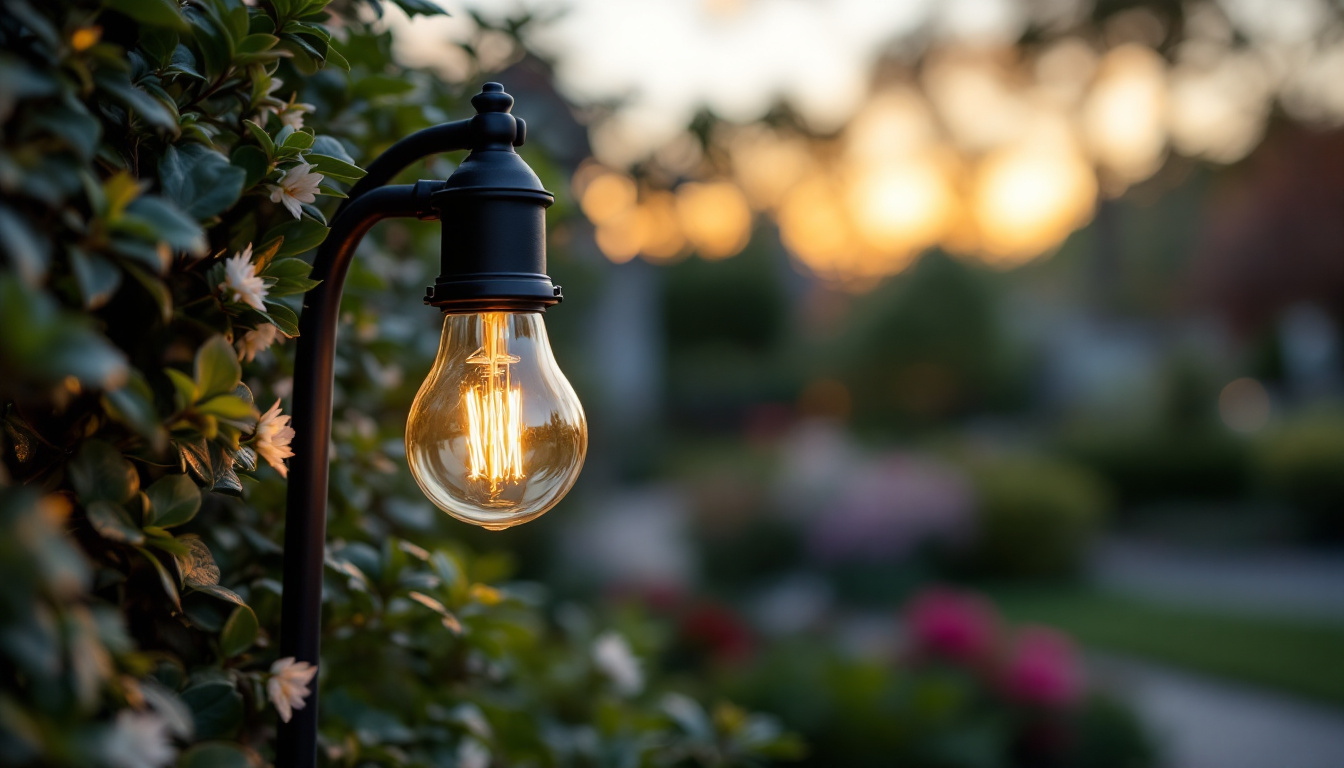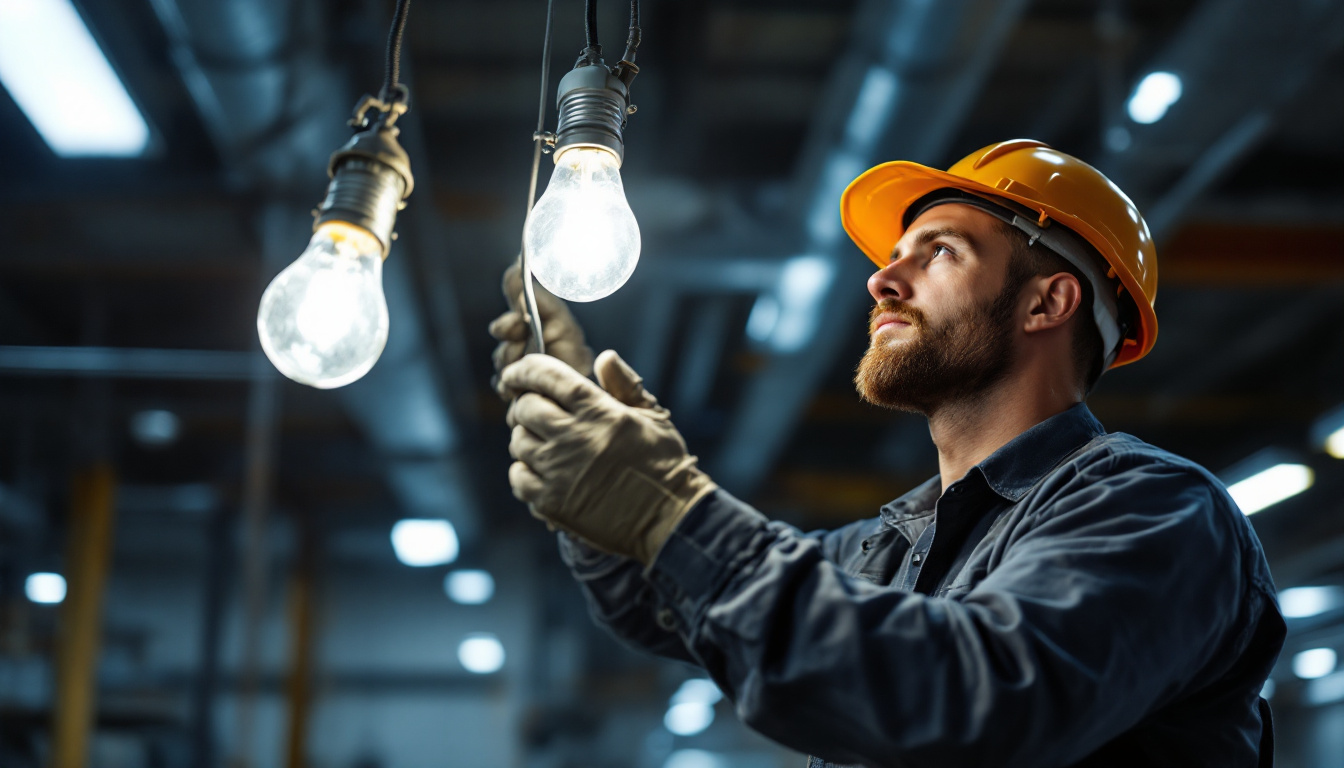
In the realm of outdoor lighting, the bulb socket is often an overlooked component. However, it plays a pivotal role in ensuring the functionality and longevity of lighting installations. For lighting contractors, understanding the intricacies of outdoor bulb sockets is essential for delivering quality service and achieving customer satisfaction. This article delves into the vital aspects of outdoor bulb sockets, offering insights that can enhance the effectiveness of lighting projects.
Outdoor bulb sockets are designed to withstand various environmental conditions while providing a secure connection for light bulbs. These sockets come in various types and materials, each suited for different applications. Familiarity with these options is crucial for contractors who aim to provide reliable and efficient lighting solutions.
Outdoor bulb sockets can be categorized into several types, each with distinct features and benefits. The most common types include:
Choosing the right type of socket is critical for ensuring the longevity of the installation. Each type serves a specific purpose, and understanding these distinctions can help contractors make informed decisions based on the project requirements. For instance, while Edison sockets are ideal for general outdoor lighting, weatherproof sockets are essential in areas prone to heavy rain or snow, ensuring that the electrical connections remain safe and functional despite the elements. Additionally, specialty sockets can enhance the aesthetic appeal of outdoor spaces, allowing for creative lighting designs that complement landscaping or architectural features.
The materials used in outdoor bulb sockets significantly impact their durability and performance. Common materials include:
When selecting materials, contractors should consider the specific environmental conditions the sockets will face, including exposure to moisture, temperature fluctuations, and potential physical impacts. For example, in coastal areas where saltwater can corrode metal, opting for high-grade plastic or composite materials may be the most effective choice. Furthermore, the choice of material can also influence the overall energy efficiency of the lighting system; some materials may better insulate against heat loss, thus improving the performance of energy-efficient bulbs. Understanding these nuances can lead to more sustainable and cost-effective lighting solutions that meet both aesthetic and functional needs.
Proper installation of outdoor bulb sockets is crucial for ensuring safety and functionality. Following best practices can prevent common issues and enhance the overall performance of lighting systems. A well-executed installation not only improves the aesthetic appeal of outdoor spaces but also contributes to energy efficiency and longevity of the lighting fixtures.
Safety should always be the top priority during installation. Contractors should adhere to the following guidelines:
By prioritizing safety, contractors can protect themselves and their clients from potential hazards associated with electrical installations. Additionally, it’s wise to have a first aid kit on hand and to familiarize oneself with emergency procedures in case of an accident. Regular safety training sessions can also keep all team members updated on best practices and new safety protocols, fostering a culture of safety awareness on the job site.
Properly securing connections is vital for the longevity of outdoor lighting systems. Here are some tips for ensuring secure connections:
Taking the time to secure connections properly can save contractors from future service calls and enhance customer satisfaction. Moreover, using high-quality materials can further mitigate risks associated with outdoor installations. Regularly inspecting connections and fixtures for wear and tear can help in identifying potential issues before they escalate, ensuring that the lighting system remains efficient and reliable throughout its lifespan. This proactive approach not only benefits the installation but also builds trust with clients, who appreciate the attention to detail and commitment to quality.
Even the best installations require maintenance to ensure optimal performance over time. Understanding common issues and their solutions can help contractors provide excellent service to their clients.
Outdoor bulb sockets can encounter various issues, including:
Identifying these issues early can prevent more significant problems and ensure that lighting systems remain functional and reliable. For instance, corrosion can often be mitigated by using weather-resistant materials and applying protective coatings during installation. Additionally, understanding the specific environmental conditions in a given area can help contractors choose the right products that will withstand local weather patterns.
Regular maintenance can extend the life of outdoor bulb sockets. Consider the following tips:
By implementing a routine maintenance schedule, contractors can enhance the reliability of their outdoor lighting installations and foster long-term client relationships. Additionally, educating clients on the importance of maintenance can empower them to take proactive steps, such as scheduling seasonal checks or reporting any irregularities in their lighting systems. This collaborative approach not only helps in maintaining the installations but also builds trust between contractors and clients, ensuring that any potential issues are addressed before they escalate into costly repairs.
The lighting industry is continually evolving, and advancements in outdoor bulb socket technology are no exception. Staying informed about these innovations can provide contractors with a competitive edge.
Smart technology is making its way into outdoor lighting solutions, including bulb sockets. Smart sockets allow for remote control and automation of lighting systems, offering numerous benefits:
Incorporating smart sockets into installations can enhance the value of services provided and meet the growing demand for energy-efficient solutions. Furthermore, these smart sockets often come equipped with sensors that can detect ambient light levels, automatically adjusting the lighting based on the time of day or weather conditions. This feature not only enhances convenience but also contributes to energy savings, as lights will only operate when necessary. As the trend towards smart homes continues to rise, offering such innovative solutions can significantly boost a contractor’s appeal to tech-savvy clients.
Recent advancements in materials and design have led to the development of outdoor bulb sockets with improved weather resistance. These innovations include:
By utilizing these advanced products, contractors can ensure their installations withstand the test of time and environmental challenges. Additionally, the integration of corrosion-resistant coatings has become increasingly popular, providing an extra layer of protection against harsh weather conditions, such as saltwater exposure in coastal areas. This is particularly beneficial for clients in regions prone to extreme weather, as it ensures the longevity and reliability of outdoor lighting systems. Moreover, these advancements not only improve functionality but also enhance the aesthetic appeal of outdoor spaces, allowing for more versatile design options that can complement a variety of architectural styles.
Lighting contractors must navigate a landscape of regulations and standards when working with outdoor bulb sockets. Understanding these requirements is essential for compliance and safety.
Each region may have specific electrical codes governing outdoor lighting installations. Contractors should be familiar with these codes to ensure compliance. Key considerations include:
Staying updated on local codes can help contractors avoid fines and ensure the safety of their installations.
As the focus on sustainability increases, contractors must also consider environmental regulations. This includes:
By prioritizing environmental responsibility, contractors can enhance their reputation and appeal to eco-conscious clients.
Outdoor bulb sockets are a fundamental component of any outdoor lighting installation. For lighting contractors, understanding the types, materials, installation best practices, and maintenance strategies is crucial for delivering high-quality service. As technology advances and regulations evolve, staying informed will enable contractors to provide innovative and compliant solutions to their clients.
By prioritizing safety, quality, and sustainability, lighting contractors can enhance their services and build lasting relationships with their clients. The insights shared in this article serve as a valuable resource for navigating the complexities of outdoor bulb sockets, ultimately leading to successful lighting projects and satisfied customers.
Ready to elevate your outdoor lighting installations with the best in the business? Look no further than LumenWholesale for all your outdoor bulb socket needs. Our extensive selection of spec-grade lighting products is designed to meet the highest industry standards, ensuring you deliver exceptional quality to your clients. With unbeatable wholesale prices and the convenience of free shipping on bulk orders, we make it easy to access premium lighting without the extra costs. Don’t let middleman markups dim your project’s potential. Choose LumenWholesale for Wholesale Lighting at the Best Value and brighten your professional offerings today.

Discover why metal halide bulbs are indispensable for lighting contractors.

Discover how T5 LED technology is revolutionizing the lighting industry by offering contractors a cost-effective and time-saving solution.

Discover essential tips and strategies for lighting contractors to prevent common issues with CFL light ballasts.

Discover expert advice on LED light sconces for lighting contractors, including installation tips, design insights, and industry trends to enhance your projects—boost your expertise today!.